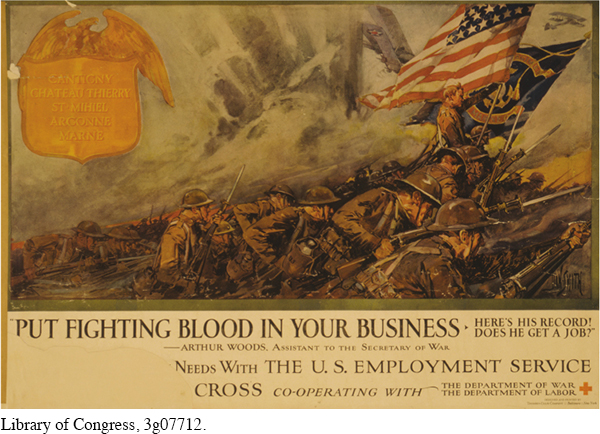The American Promise: Printed Page 640
The American Promise, Value Edition: Printed Page 584
The American Promise: A Concise History: Printed Page 664
Economic Hardship and Labor Upheaval
Americans demanded that the nation return to a peacetime economy. The government abruptly abandoned its wartime economic controls and canceled war contracts. In a matter of months, 3 million soldiers mustered out of the military and flooded the job market just as war production ceased. Unemployment soared. At the same time, consumers went on a postwar spending spree that drove inflation skyward. In 1919 alone, prices rose 75 percent over prewar levels.

The American Promise: Printed Page 640
The American Promise, Value Edition: Printed Page 584
The American Promise: A Concise History: Printed Page 664
Page 641Most of the gains workers had made during the war evaporated. Freed from government controls, business turned against the eight-
A strike by Boston policemen in the fall of 1919 underscored postwar hostility toward labor militancy. Although the police were paid less than pick-
Labor strife climaxed in the grim steel strike of 1919. Faced with the industry’s plan to revert to seven-